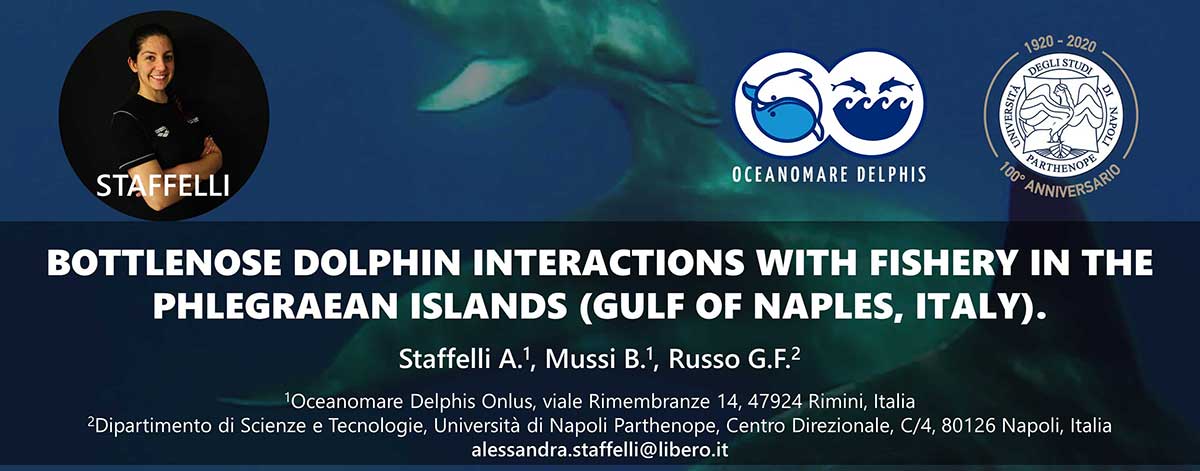The 33rd European Cetacean Society conference was held virtually this week. The theme of this year's conference was Marine Mammal Research and Conservation - Are we on the right track?
The chosen theme stimulated the conventional approach to marine mammal science and raised critical questions about the past, present, and future to ensure that the shared goal -the conservation of marine mammals -is effectively pursued appropriately.
In the biology section, our association presented a paper entitled Interactions of bottlenose dolphins with fisheries in the Flegrean Islands (Gulf of Naples, Italy).
The study examines interactions between bottlenose dolphins (Tursiops truncatus) and fishing activities in the waters of the islands of Ischia and Procida (Gulf of Naples, Italy) over fifteen years (2004-2018). The study area falls partially within the limits of the Marine Protected Area "Kingdom of Neptune." Data were collected as part of the Ischia Dolphin Project, a long-term field research program on cetaceans, and through questionnaires to fishermen. A total of 1186 daily surveys were conducted, covering 58332.47 km and resulting in 91 encounters with the species. Interactions with trawling were recorded when bottlenose dolphins were seen following fishing vessels to feed. Interactions with gillnets were also recorded when animals were seen swimming near fishing gear for more than 20 minutes and performing prolonged apneas (more than 4 minutes). Interactions were observed in 22 sightings (25.18%), 55% of which involved gillnets used by artisanal fisheries, and 27% concerned trawls from the industrial fleet. Interactions with both fishing gears were recorded on four occasions. The routes taken by dolphins during the interactions were analyzed using QGIS Kernel Density Estimation and Hotspot analysis. Interactions with gillnets are concentrated NW of Ischia and in the channel between the islands of Ischia and Procida; in contrast, interactions with trawls are localized N of Procida. The interviews were conducted almost entirely (93%) with artisanal fishermen, who mainly use set gillnets (87%). All fishermen interviewed reported instances of depredation, with 65% reporting several interactions per week. The main harms to fishermen include stealing fish from nets (41%) and breaking nets (44%). Solutions are proposed, such as replacing gillnets with creels, using pingers, enlarging the MPA perimeter, and establishing no-take zones.

